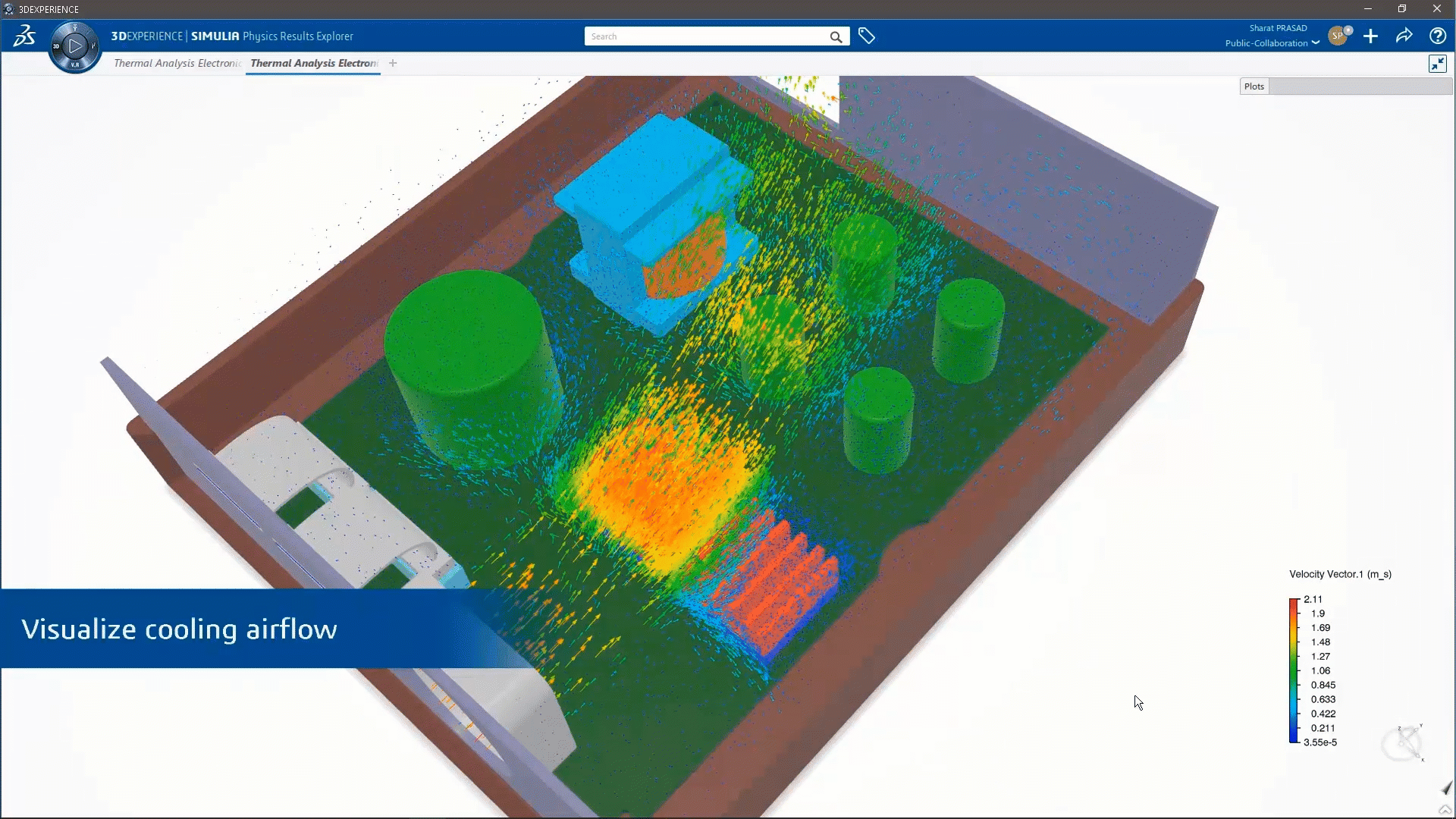In part one of this simulation article, we discussed finite element analysis (FEA) tools. Not only are FEA tools often difficult to learn and use, but in some cases they also require expanded computing resources.
However, SOLIDWORKS® delivers a scalable simulation portfolio accessible to everyone, including students, designers, engineers, and high-level FEA specialists. The 3DEXPERIENCE® platform paves the way to a new era of simulation tools with the 3DEXPERIENCE Works Simulation product portfolio.

Most engineers know that digital simulation directly impacts the bottom line by helping to improve product quality, reliability, and performance. In part one, we learned that simulation would effectively discover and address multiple questions, including 1) Will it work? 2) What if it drops? and 3) Is it strong enough?
In part two, I will address:
- Will it last?
- Will it overheat?
- Can it be manufactured without incident?

Let’s take a look at how simulation can help answer these questions.

How Long Will It Last?
This is a crucial question regarding any product. We are pleased to introduce durability testing in our 3DEXPERIENCE Works portfolio this year. Coupled with the proven Abaqus® technology from SIMULIA®, the fe-safe® durability solver, also from SIMULIA, can run multiple load cases in multiple directions, like the example above.

The software provides log life plot results so you can understand potentially problematic areas within your product. This information is critical to improving your product before you manufacture it. The fe-safe durability technology comes with a vast library of materials—more than 350 materials are available on the platform—for durability simulation which is essential to achieving accurate results.

Will It Overheat?
Another trend for electronic devices is miniaturization or packing more and more power into a smaller space, which results in multiscale thermal management challenges. When power quickly peaks and falls, thermal behaviors change, and components and sub-components can be at risk of failure. Adequate testing involves multiphysics such as structural, thermal and airflow cooling, to name just a few.

You also need simulation techniques—including FEA and Computing Fluid Dynamics (CFD) methods—to fully understand and predict complex multiscale multiphysics design. Early simulation provides the opportunity to measure design behavior and optimize a design accurately.
In a broader scope, all electronic devices and structures located close to batteries have a risk of overheating and product failure. Knowing the temperatures and the cooling airflow in a system and sub-system is critical for a successful product.

Can It Be Manufactured?
Many products are made of plastics, and the use of an injected plastic manufacturing process is common. This puts a responsibility on the designer to consider the components’ functionality and the product’s manufacturability. The 3DEXPERIENCE Works portfolio of simulation tools can provide design for manufacturability assessments, including:
- Can the part be manufactured?
- What is the best material?
- Will there be quality issues (with weld lines, sink marks, air traps, etc.)?
- Can the part meet form and fit requirements (such as part shrinkage and warpage)?
The flip side of part design is mold design. Again, simulation can help designers test for molding feasibility and optimization such as:
- Estimating expected cycle times.
- Analyzing single-cavity, multi-cavity, and family mold layouts, including sprues, runners, and gates.
- Analyzing mold cooling line layouts.
Addressing these manufacturing issues early in the process can save considerable time, money, and headaches on the back end.
Learn More
Click here to see the entire presentation on this topic given at 3DEXPERIENCE World 2021. The presentation also covered the SOLIDWORKS workflow with 3DEXPERIENCE Works Simulation tools.
Simulation helps you discover potential issues earlier in the process when they are less costly to resolve. The cloud-based platform provides the technology infrastructure to manage the people, data, and documents among your entire team, including partners, customers, suppliers, and manufacturers.
Originally posted in the SOLIDWORKS Blog.